To us, creating a study space for kids means more than just setting up a desk and a chair. We know that kids are better able to “show what they know” when they can move, when they are exposed to hands-on learning activities, and when all of their senses are engaged!
*This post contains affiliate links. Read more.
So, when we received a message from a reader asking for recommendations on how to create an awesome study space for her kids, we couldn’t wait to get started! She was looking for a space that would grow with her kids, offer plenty of open space, and not feel too “classroom-like”.
She also mentioned that one of her children has some delays in the areas of fine motor skills and language processing – so we knew we wanted to work in some features to address those needs too.
There are many things to take into consideration when building a study spaces or reading nooks for kids. You want to be sure to make the space functional, visually appealing, and – above all – FUN for the kids who will be using them!
These ideas are perfect for homeschooling or just a simple homework space. Check out even more ideas for a homeschool room setup!
Here are some of our favorite ideas for creating a versatile, supportive home study environment for kids!
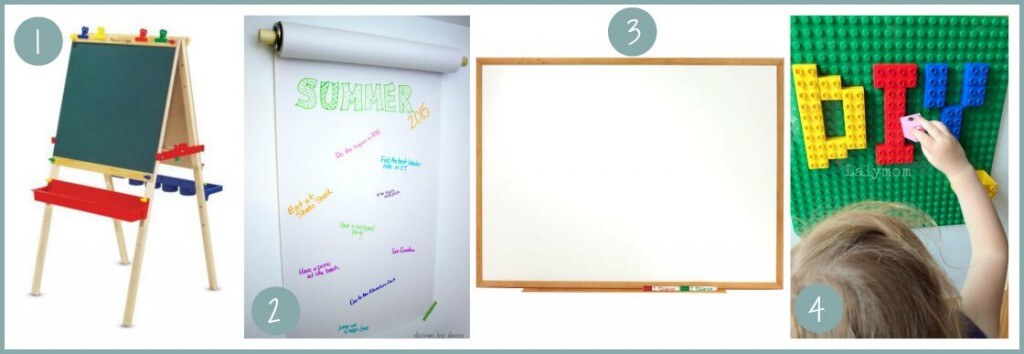
|| Vertical Work and Play Spaces ||
We’ve written before about the benefits of having kids work on a vertical surface and we think that vertical workspaces are awesome features to work into a kids’ study space.
From strengthening to midline crossing to grasping skills, a vertical surface like this Melissa and Doug easel, this cool mounted kraft paper idea, or a wall mounted dry erase board offers great benefits for kids!
Time for a homework break? Let the kids loose to play on a Lego Wall! Another great vertical surface idea, this DIY project adds some fun to a study space!
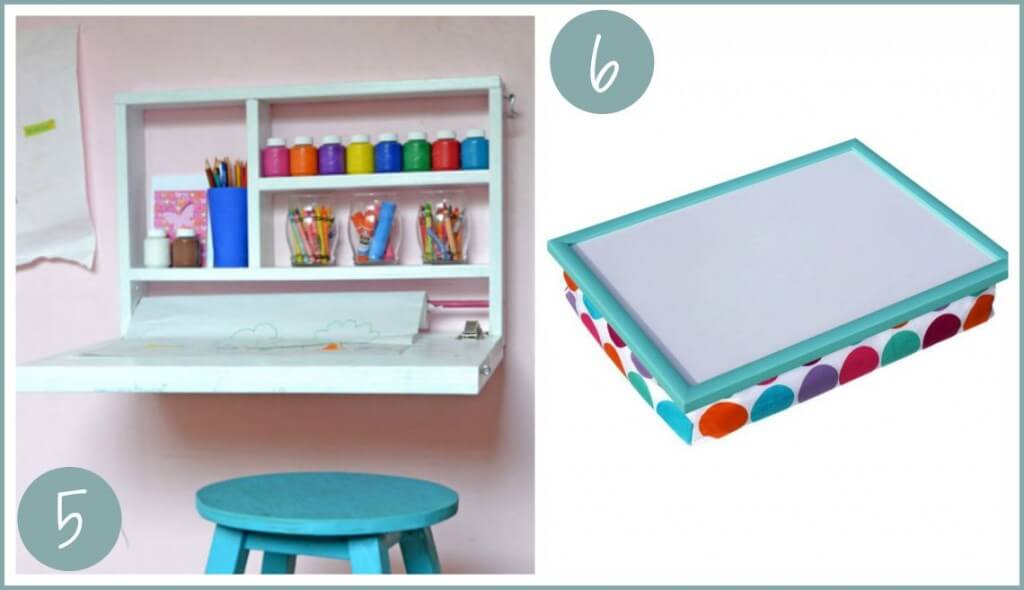
|| Other Work Spaces ||
Having a variety of workspaces available during homework time ensures that kids can get the sensory input they need by switching positions and moving.
We love the idea of having desks that flip down from the walls like this cool Flip Down Wall Art Desk (the desk turns into a chalkboard when it’s flipped up against the wall – another great vertical surface!). When desks are flipped up and stored away, you’re left with even more space for alternative seating options.
One other great idea that our lovely reader mentioned in her original message was a portable lap desk – a great way for kids to be able to work almost wherever they want – the floor, a couch, a bean bag chair, etc. (see below for more seating options).
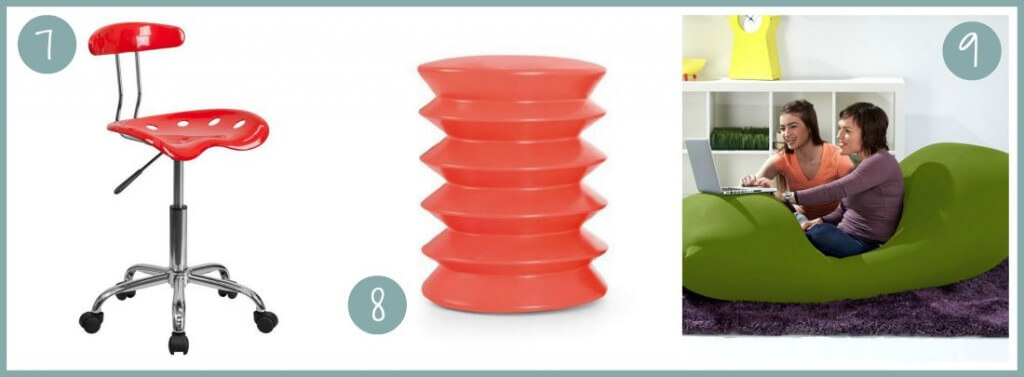
|| Seating Options ||
Forget the good old-fashioned desk chair. For this fun study space, we wanted seating that offered a more dynamic experience for kids. This cool chair from Flash Furniture swivels and rolls – and its height is adjustable so it can grow with the kiddos!
Another great seating alternative? The ErgoErgo Ergonomic Stool. This neat little seat provides subtle movement input while also targeting core strength as kids make slight adjustments to their posture to remain upright.
When it’s time to move away from the desk, the Yogibo Max Giant Bean Bag is an awesome option. This lightweight bean bag can be used as a chair, a recliner, a couch, or a bed and would be ideal for using with the lap desks mentioned above.
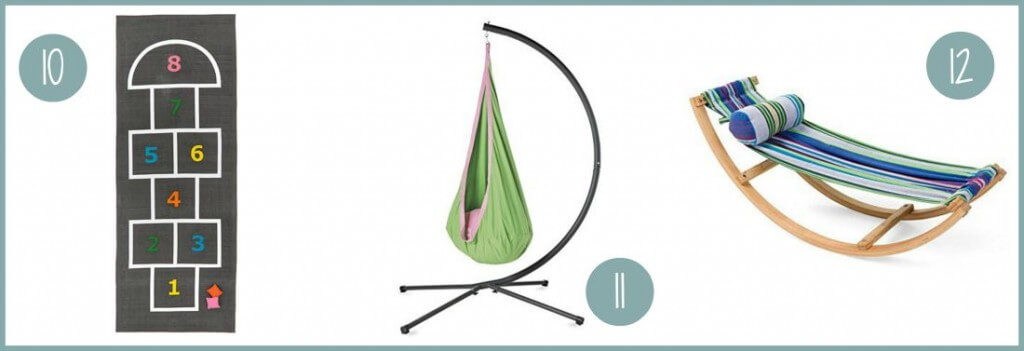
|| Movement Options ||
Many, if not most, children need to MOVE to attend and to learn! It’s one of the main messages we preach here at The Inspired Treehouse. We think it’s essential to add a few features to a study space that inspire and encourage kids to get up and get active!
You don’t have to head outside or wait for a sunny day for a game of hopscotch! Throw this hopscotch rug/play mat from Land of Nod on the floor of your study space and you’ve got a built-in movement break!
Vestibular input can be calming and organizing for many kids – perfect for homework time. What better way to provide it than with a swing? The Hearthsong Hugglepod Deluxe Hanging Chair can be used almost anywhere with the Hanging Chair Crescent Stand.
Or how about a Rocking Hammock? This would be such an awesome little spot for kids to hang out and read after school.
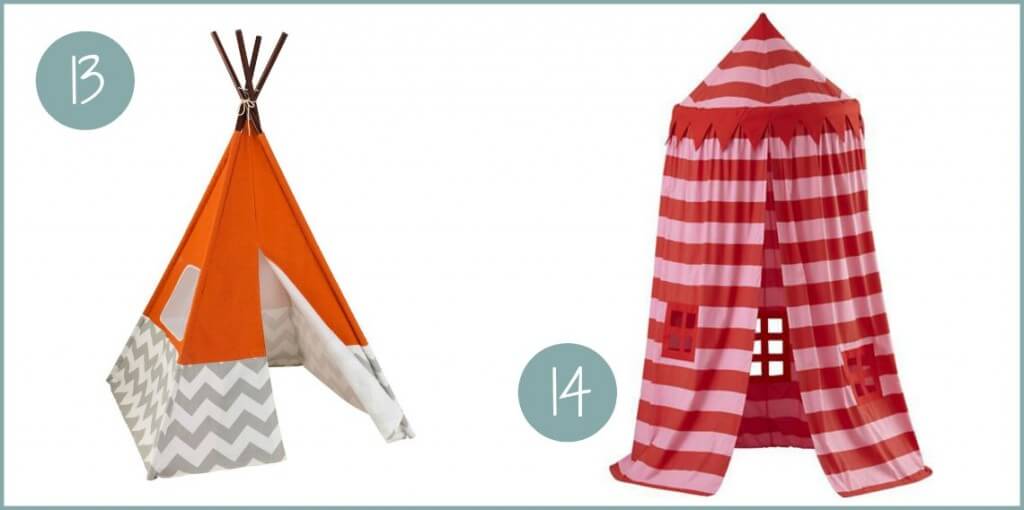
|| A Quiet Space ||
Last, but not least…a secret hideout! Having a mix of alerting and calming sensory and movement options is a great way to make sure kids have what they need when they need it. And sometimes a nice, quiet space is just enough to help little ones calm down and reset after a busy day at school.
This Teepee from KidKraft is one awesome quiet space option. Or how about this cute little canopy tent from Land of Nod?
So that’s what we came up with to help create an awesome kids’ study space. How did we do? Is there anything you would add? Leave us a comment below or on Facebook!

Learn more about our new book, Sensory Processing 101!
Latest posts by Lauren Drobnjak (see all)
- End of the Year Gifts for Therapists - April 14, 2024
- Playful Therapy Posters to Spruce Up Your Room - March 30, 2024
- How to Help a Baby Crawl & Creative Crawling Patterns We See in Therapy - March 19, 2024
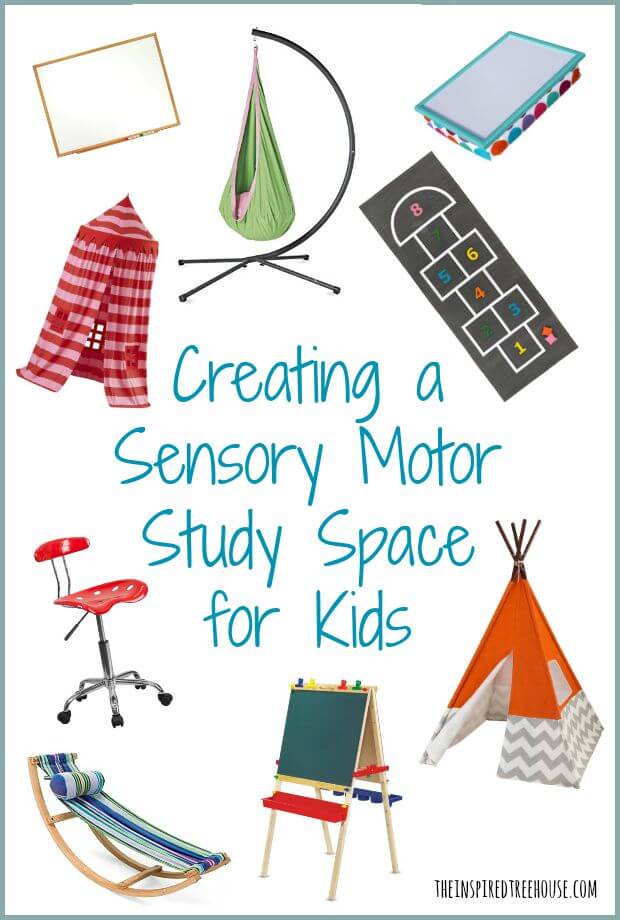


[…] are looking for new ideas for presenting music in concerts and on the football more bonuses field. They want music that will add diversity to their concert […]